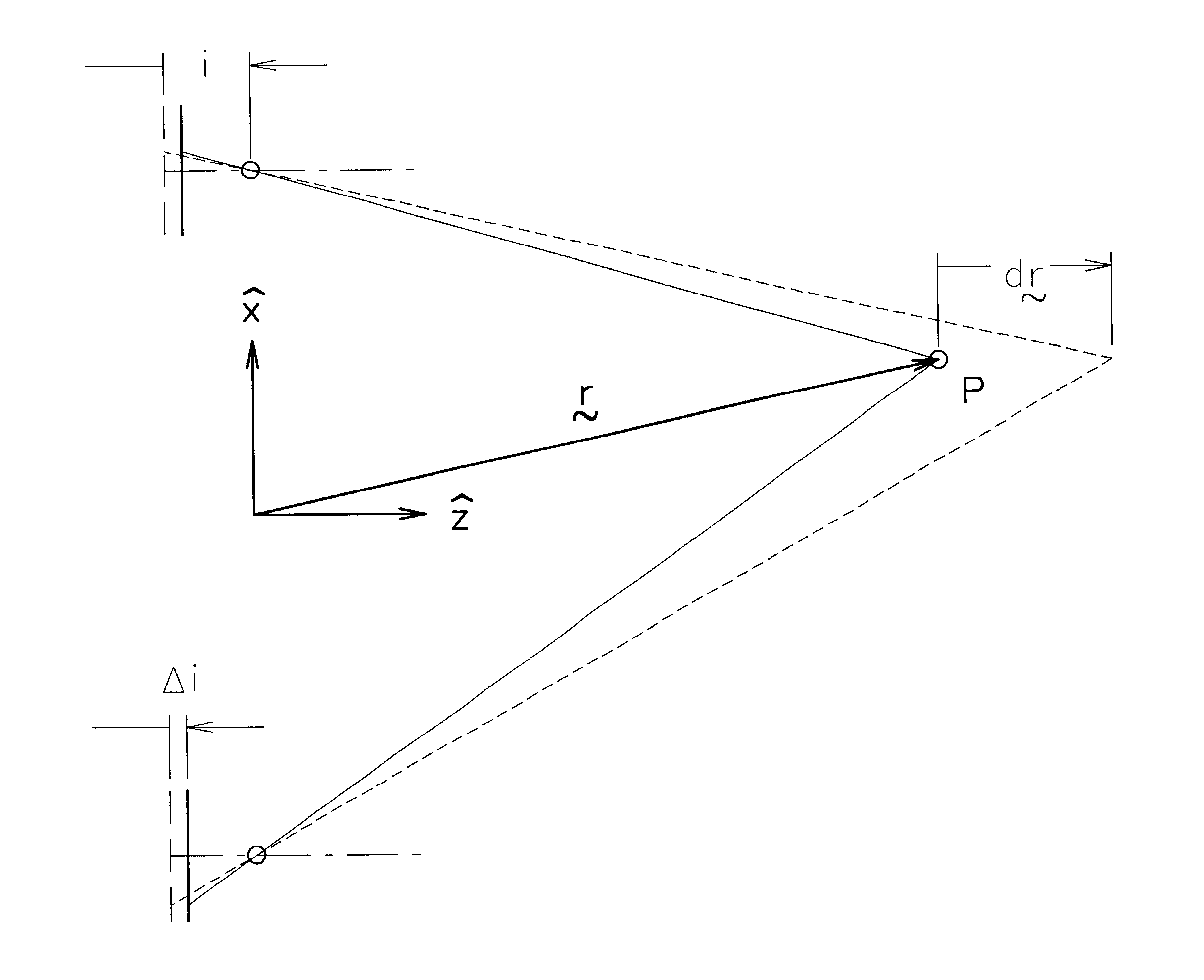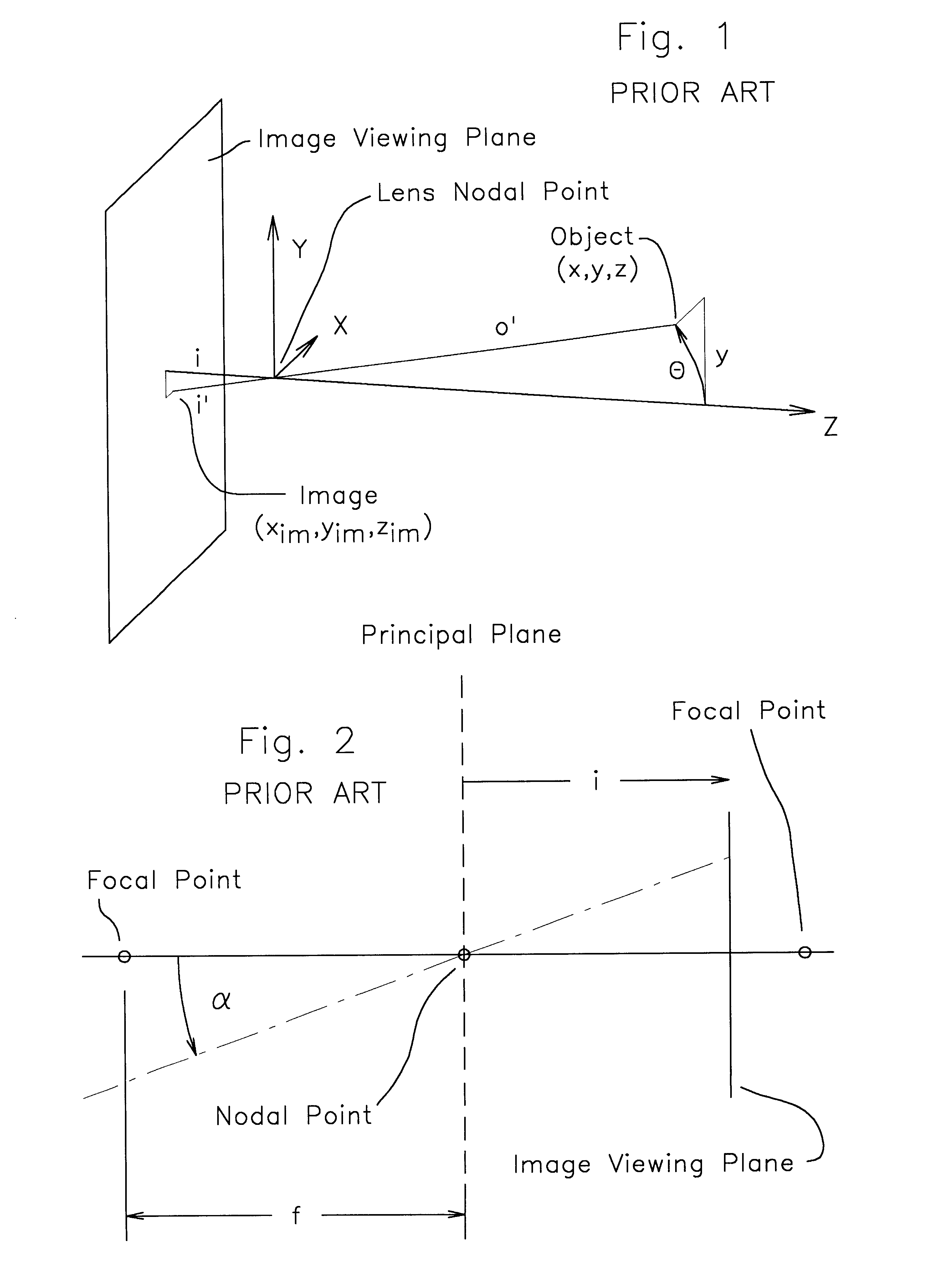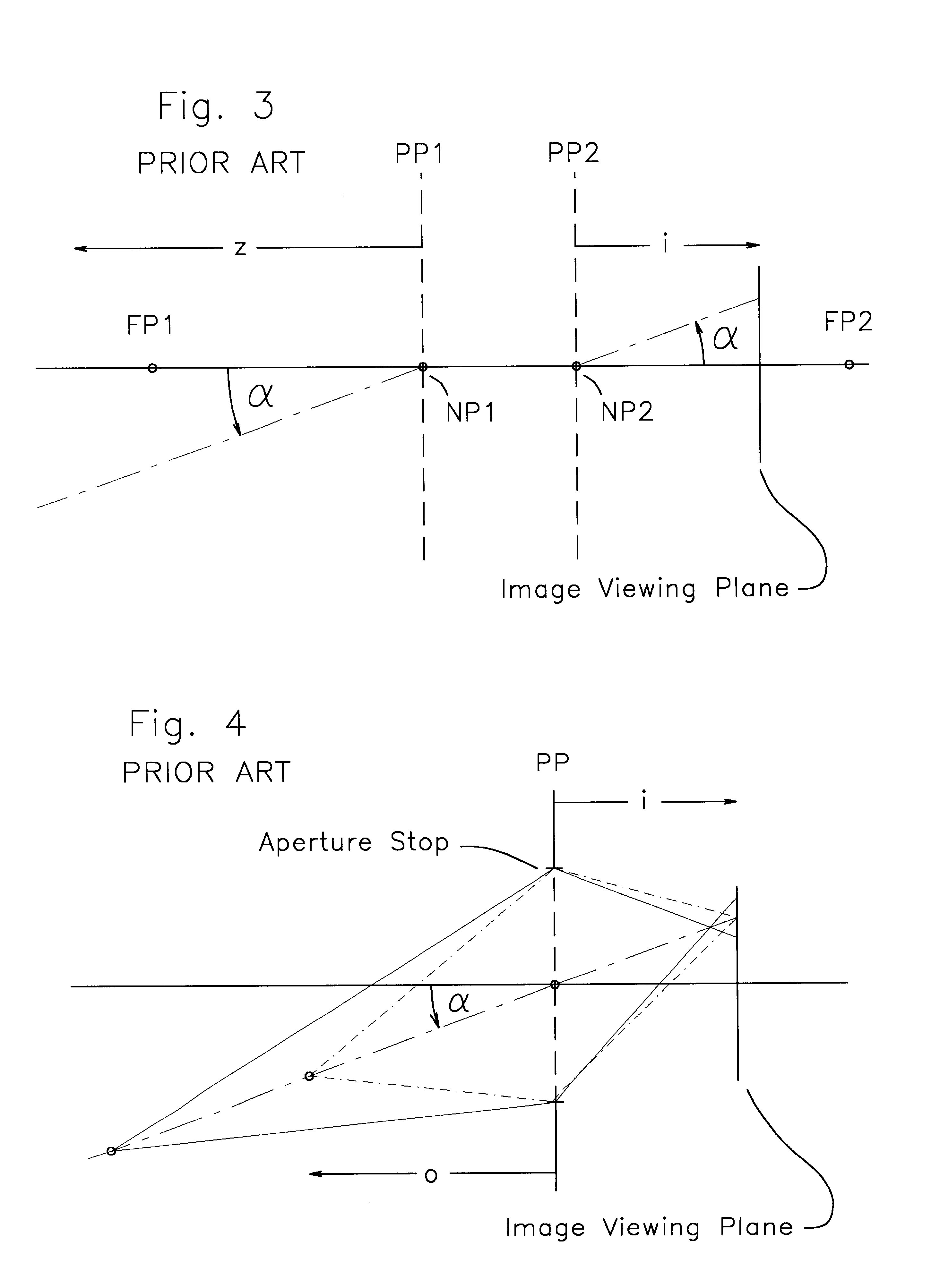Focusing systems for perspective dimensional measurements and optical metrology
a technology of optical metrology and focusing system, which is applied in the field of optical metrology, can solve the problems of loss of calibration, no inherent ability of the user to quantitatively measure the size of the objects he or she is viewing, and new optical calibration
- Summary
- Abstract
- Description
- Claims
- Application Information
AI Technical Summary
Benefits of technology
Problems solved by technology
Method used
Image
Examples
first embodiment
The layout of the optical system of this first embodiment is depicted in FIG. 11. A lens surface, 125, represents the most proximal surface of the eyepiece lens of the borescope. Then, successively to the right along optical axis 8 are depicted borescope exit pupil 22, projection lens 788 with front and rear principal planes PP1 and PP2, and the image sensing surface of focal plane array 770. Also indicated are extreme axial positions 770a and 770b that the sensing surface of array 770 may take due to the action of translation slide 780 (FIGS. 8 and 9). The range of motion includes a position slightly inside of the rear focal point of lens 788.
Exit pupil 22 lies approximately 12 to 20 mm behind lens surface 125, depending on the optical and mechanical design of the borescope being used. When the system is aligned as discussed below, projection lens 788 is mounted so that its front focal point lies in the plane of exit pupil 22, as shown in FIG. 11.
3. Operation of the First Embodimen...
second embodiment
where FD is the distance between the position of sensor 770 and its position when an object at infinity is in focus, z is the in-focus position of the object along the optical axis, z.sub.EntP is the position of the entrance pupil of the borescope along the optical axis, f.sub.p is the focal length of the projection lens, and M.sub.B is the paraxial angular magnification of the borescope. The entrance pupil is simply the image of the aperture stop of the borescope as viewed from the object side of the scope. The paraxial angular magnification of the borescope and the other quantities used in Equation (10) will be explained in more detail in the discussion of the operation of the
Image sensor 770 is also provided with the capability to move closer to lens 788 than one focal length of that lens in case the borescope happens to be focused on objects somewhat closer than infinity. This enables the system as a whole to be focused on objects at infinity even when the borescope itself is no...
third embodiment
9. Description of a Third Embodiment
The optical system of a third embodiment of a measurement camera for use with a borescope is depicted in FIG. 31. The left hand side of this Figure is the same as FIG. 11, because the optical system is a modification of that of the first embodiment. As in the first embodiment, a most proximal lens vertex 125 of a borescope is shown, as is also a borescope exit pupil 22. A projection lens 788 is located centered on optical axis 8 at a distance of one focal length away from exit pupil 22, just as in the first embodiment.
At the right hand side of FIG. 31 is a generic image sensing plane 60. The sensing plane is denoted by a different number than it was in either of the first two embodiments to indicate the fact that with this third system, no particular sort of image sensing plane is preferred.
Located between projection lens 788 and image sensing plane 60 is an afocal focusing lens group 920 that consists of a first focusing lens 922 and a second foc...
PUM
 Login to View More
Login to View More Abstract
Description
Claims
Application Information
 Login to View More
Login to View More - R&D
- Intellectual Property
- Life Sciences
- Materials
- Tech Scout
- Unparalleled Data Quality
- Higher Quality Content
- 60% Fewer Hallucinations
Browse by: Latest US Patents, China's latest patents, Technical Efficacy Thesaurus, Application Domain, Technology Topic, Popular Technical Reports.
© 2025 PatSnap. All rights reserved.Legal|Privacy policy|Modern Slavery Act Transparency Statement|Sitemap|About US| Contact US: help@patsnap.com



